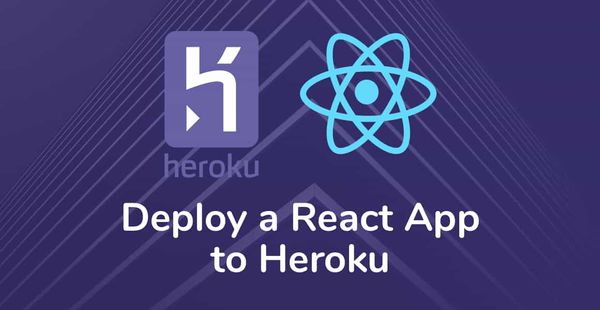Leveraging AI in Product Design
The product design industry is experiencing a notable shift, artificial intelligence (AI), which was before considered a futuristic concept, is now highly impacting the design process, offering exceptional opportunities and providing solutions to the challenges.
As tech enthusiasts, we are standing on the edge of a new era, where creativity and AI blend to unlock an exciting future for product design and software development.
In this blog, I will walk you through the profound impact of AI on product design. I will also share with you how you can use AI services for product design to enhance your business.
How AI is used in product design?
In the realm of product design, AI is used extensively to streamline and make the process precise.
Data Research
AI aids in product design with data research. By analyzing vast datasets in one go, AI extracts valuable insights, enabling designers to understand user preferences, market trends, and competitors. Using AI for data research empowers designers to make more informed decisions and tailor their designs to meet user needs.
Graphical Data Visualization
With AI, designers don't have to rely on static charts and graphs. AI improves the product design process through graphical data visualization. It changes complex data sets into visually understandable representations, aiding designers to figure out patterns, identify correlations, and make strategic design choices. This handy visual interpretation simplifies decision-making and fosters more intuitive and impactful design solutions.
Solution Ideation
Gone are the days of staring at a blank canvas for hours, desperately searching for inspiration. With the rise of artificial intelligence (AI), creativity in product design has experienced a 10x boost, opening once unimaginable possibilities.
Picture this: You have a preliminary idea for a product, but the specifics need to be clarified. So, instead of spending countless hours brainstorming, you simply feed a prompt to an AI tool like ChatGPT or Midjourney. In a matter of seconds, you're presented with a plethora of unique and innovative design concepts. These concepts, inspired by historical design data and current trends, serve as jumping-off points for your creativity, allowing you to refine and personalize them to your vision.
Design Process Automation
AI is more than just a design assistant. It serves as a visionary partner, offering solutions that drive and extend the boundaries of traditional design thinking. By exploring vast amounts of data, AI can identify trends and patterns that human designers might skip, leading to unforeseen breakthroughs and unexpected solutions.
This doesn't mean that AI is replacing human designers. Instead, AI empowers designers, freeing them from boring and repetitive tasks like generating variations of design elements or creating prototypes.
Pros of using AI in UX and product design
Quality, Productivity, and Efficiency
AI can improve the design process while consecutively improving quality and fostering greater creative exploration. Design tasks like generating design variations, creating prototypes, and performing quality checks can now be automated, liberating designers to focus on brainstorming, refining ideas, and exploring their creative sides.
Additionally, AI can come up with new design concepts based on user data and trends that are least focused, sparking new ideas and pushing the boundaries of design thinking.
Gaining valuable insights to make a more informed decision
No more guesswork. AI gives designers insights into user behavior, preferences, and needs through data analysis and predictive analytics. This enables users to focus on user-centric products that perfectly align with user expectations and provide a truly satisfying experience.
Cost-Effectiveness
AI brings cost-effectiveness to the forefront of product design by significantly reducing design costs and minimizing the need for additional resources. This cost-efficient approach ensures that SMBs as well as large enterprises, can achieve stellar design outcomes without breaking the bank.
Minimal Friction
AI can be used to create intuitive and seamless user experiences that minimize friction and frustration. By examining user behavior and identifying their pain points, designers can use AI to personalize product features and interactions. Additionally, AI-powered chatbots and virtual assistants provide real-time support and assistance to users, which further enhances user experience and reduces friction.
As technology evolves, we expect better and more powerful applications that will further revolutionize the way we design and interact with products.
Challenges of integrating AI in UX and Product Design
While AI potentially enhances UX and product design, its implementation also has certain drawbacks that need strong attention. It includes concerns like:
Trust Factor
The reliability of designs influenced by machine algorithms is always questioned by users. Overcoming this hurdle requires transparent communication, demonstrating how AI contributes to the design process, and assuring users feel confident in the outcomes generated by these intelligent systems.
Data Privacy
The success of AI tools depends on data, boosting concerns about user privacy and security. Designers must ensure user data is collected, stored, and processed ethically and transparently, adhering to data protection regulations like GDPR and CCPA. Building user trust requires straightforward communication about data usage and providing users with control over their data.
Bias Nature and Discrimination
AI algorithms trained on personal data can perpetuate and even strengthen discriminatory practices within product design. Designers must be able to identify and mitigate potential biases within AI tools and ensure that the products they create are free from any biases and accessible to all users. It emphasizes using diverse datasets, regularly evaluating AI outputs for biases and including fairness principles in the design process.
By fostering transparency, accountability, and a commitment to ethical principles, the benefits of AI in UX and product design can be fully acknowledged.
Conclusion
In conclusion, the integration of Artificial Intelligence (AI) into product design is a paradigm shift in the design industry where technology becomes a catalyst for innovation. As companies embrace AI tools to overcome the complexities of product design, they are poised to deliver user-centric, cutting-edge solutions. These technological marvels are not just tools; they are catalysts for innovation, efficiency, and user-centric design.
By adopting AI as a collaborator, the design community can unlock different possibilities, shaping a future where products not only function flawlessly but also resonate deeply with the human spirit.
Join hands with Logicwind to unlock unlimited opportunities for sustainable growth. Our tailored AI solutions including custom development to ongoing optimizations, are designed to meet your unique needs. Propel innovation, boost efficiency, and stay at the forefront of the AI landscape. Dive into our comprehensive AI services now, paving the way for intelligent solutions that elevate your business to unprecedented heights.
FAQs
Q. How can product designers leverage AI?
A. Product designers can leverage AI to streamline workflows, generate creative insights, and optimise user experiences, stimulating innovation and efficiency.
Q. How does AI impact product design?
A. AI impacts product design by enhancing collaboration, automating repetitive tasks, and providing data-driven insights, resulting in more informed decisions and exceptional design outcomes.
Q. What is the future of product design using AI?
A. The future of product design using AI promises advanced automation, personalization, and predictive capabilities, revolutionizing the design process and user interactions.




